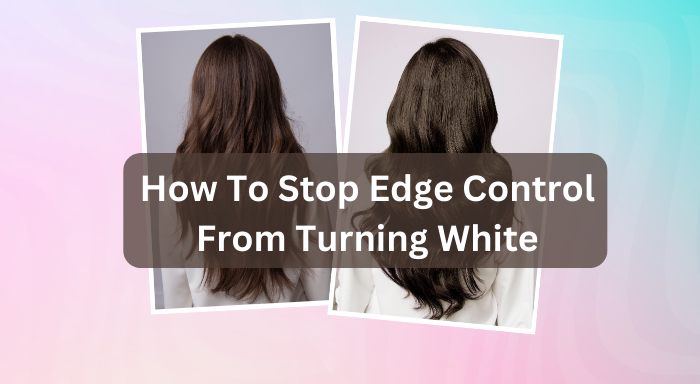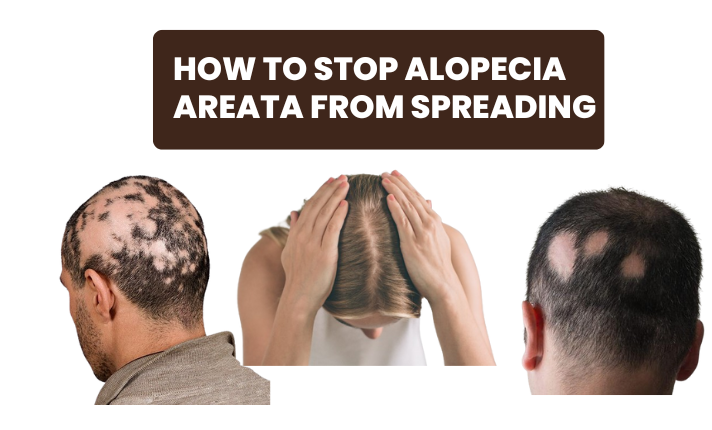How To Stop Edge Control From Turning White

Are you tired of applying edge control to your hair, only to have it turn white and flaky? We’ve all been there – striving for those flawless edges, only to be left with a powdery mess. But fear not! In this article, we’ll share some tried-and-true tips on how to stop edge control from turning white. So say goodbye to the dreaded white residue and hello to sleek, slay-worthy edges that will turn heads wherever you go!
Now let’s dive into the nitty-gritty details:
Choose the Right Edge Control Product
When it comes to selecting an edge control product, it’s crucial to choose one that suits your hair type and texture. Look for a formula that is specifically designed for your hair’s needs, whether it’s curly, straight, thick, or fine. Experiment with different brands and formulations until you find the perfect match.
Apply the Right Amount
Less is more when it comes to applying edge control. It can be tempting to slather on a generous amount in hopes of achieving those sleek edges, but this is a recipe for disaster. Instead, start with a small pea-sized amount and spread it evenly across your fingertips. Gently smooth the edge control along your hairline, using light pressure to avoid any excess product buildup.
Use a Satin or Silk Scarf
After applying edge control, it’s important to keep your edges in place while the product sets. Using a satin or silk scarf can help to prevent any friction or rubbing that may cause the product to turn white. Simply tie the scarf around your hairline, making sure it’s snug but not too tight. Leave it on for at least 15-30 minutes, allowing the edge control to dry and set properly.
Avoid Excessive Product Buildup
One of the main reasons why edge control turns white is due to excessive product buildup. Over time, layers of product can accumulate on your edges, causing them to become flaky and powdery. To avoid this issue, make sure to thoroughly wash and clarify your hair regularly. Use a clarifying shampoo to remove any product residue and buildup from your edges. Additionally, avoid applying edge control on top of already existing product. Start with clean, product-free hair to ensure a smooth application.
Don’t Overwork the Product:
When applying edge control, it’s important not to overwork the product into your hair. Excessive rubbing or brushing can cause the edge control to turn white and flaky. Instead, gently smooth the product onto your edges using your fingertips or a soft brush, following the natural direction of your hairline. Avoid excessive manipulation or rubbing that may disrupt the product’s texture.
Set with Heat
If you’re dealing with particularly stubborn edges that refuse to stay in place, you can try setting them with heat. After applying edge control, use a flat iron or a hot comb on low to medium heat to gently press down your edges. This will help to set the product and keep your edges sleek and smooth throughout the day.
Touch Up as Needed
Throughout the day, it’s normal for your edges to experience some natural movement or frizz. Instead of reapplying edge control every time this happens, opt for a touch-up instead. Simply dampen your fingertips with water or a small amount of edge control, and gently smooth down any unruly hairs. This will help to refresh your edges without adding excessive product.
PROS And CONS To Stop Edge Control From Turning White
Using edge control can be a game-changer when it comes to achieving sleek, laid edges. However, like any product, there are pros and cons to consider. Let’s take a closer look:
PROS
- Sleek and Polished Look: The primary benefit of using edge control is that it helps to create a smooth, polished look for your edges. It tames flyaways and gives your hairstyle a more put-together appearance.
- Long-Lasting Hold: Edge control products are designed to provide long-lasting hold, keeping your edges in place throughout the day. This means you won’t have to constantly touch up or reapply product.
- Versatility: Edge control can be used on a variety of hair types and textures, making it a versatile product for people with different hair needs.
CONS
- Product Buildup: As mentioned earlier, excessive use of edge control can lead to product buildup on your edges. This can make your hair look flaky and powdery over time, requiring regular washing and clarifying to remove the buildup.
- Potential for White Residue: If you apply too much edge control or don’t spread it evenly, it can turn white and leave a residue on your edges. This can be unsightly and take away from the sleek look you’re trying to achieve.
- Limited Styling Options: While edge control is great for creating sleek edges, it may not work as well for other types of hairstyles. If you’re looking to create voluminous or textured styles, edge control may not be the best product for that.
Conclusion
Edge control can be a fantastic tool for achieving sleek and polished edges. However, it’s important to use it correctly to avoid common issues like white residue and product buildup. By following these tips and being mindful of how much product you use, you can ensure that your edges stay smooth and flawless all day long. Remember to wash and clarify your hair regularly, avoid overworking the product, set with heat if needed, and touch up as necessary. With these strategies in mind, you’ll be able to enjoy the benefits of edge control while avoiding any unwanted side effects.






